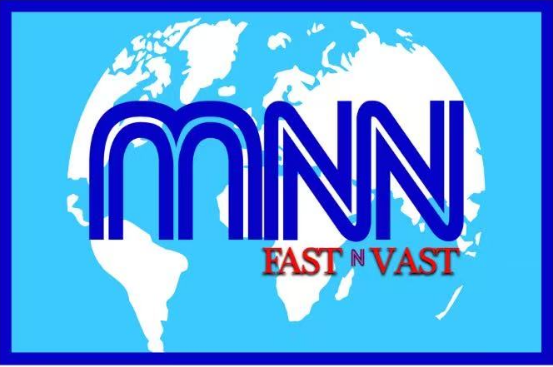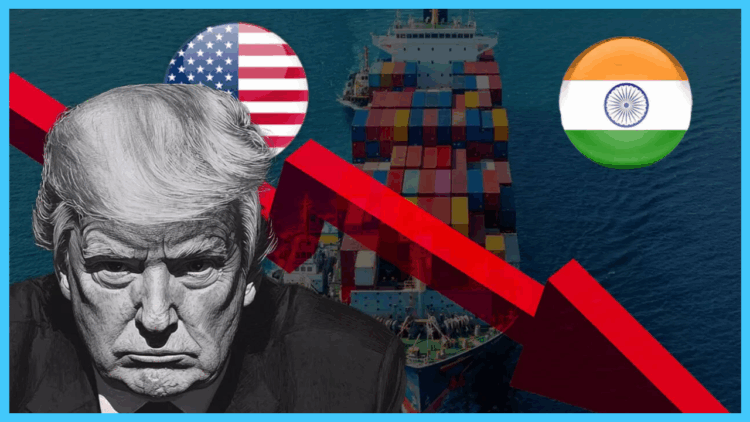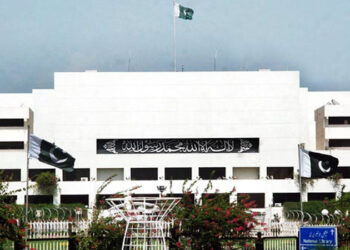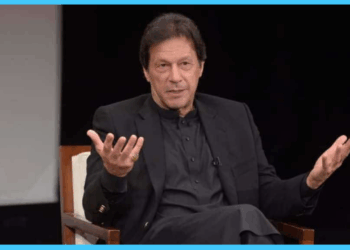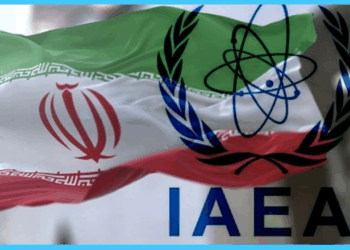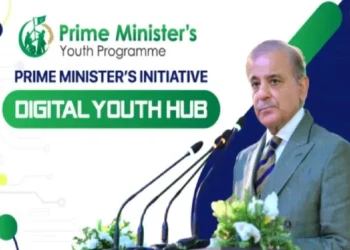Web Desk; United States President Donald Trump’s decision to impose a sweeping 50 percent tariff on Indian goods came into effect on Wednesday, marking a dramatic escalation in trade tensions between Washington and New Delhi.
The measure, which follows weeks of failed negotiations and warnings, is expected to hit billions of dollars worth of Indian exports and could threaten the livelihoods of hundreds of thousands of workers in Asia’s fastest-growing major economy.
The punitive tariff is one of the harshest ever imposed by the United States on a trading partner. It builds on two earlier rounds of duties, a 25 percent levy introduced on July 30, followed by another 25 percent hike just a week later. The justification cited by Washington was New Delhi’s continued purchase of Russian oil despite repeated calls from the Trump administration to halt such imports.
Under the new regime, a wide range of Indian products will face the steep 50 percent tariff. These include garments, footwear, gems and jewellery, carpets, furniture, and various industrial chemicals. Analysts warn that the elevated rates will erode India’s export competitiveness in the US market, giving an advantage to countries such as China, Vietnam, Bangladesh, and other East Asian economies.
For Prime Minister Narendra Modi, who has championed an ambitious vision to transform India into a global manufacturing hub, the tariff is a direct setback. Until recently, the United States was India’s largest trading partner, with bilateral trade valued at $212 billion annually.
The worst-hit industries are expected to be labour-intensive sectors such as textiles, jewellery, shrimp, and handicrafts. A report by the Global Trade Research Initiative, a New Delhi-based think tank, forecasts that Indian exports to the US could plunge from $86.5 billion this year to just about $50 billion by 2026 if the tariffs remain in place.
This decline, the report cautioned, could lead to a collapse of nearly 70 percent in certain sectors, jeopardizing hundreds of thousands of jobs. MK Venu, founding editor of the news site The Wire, echoed these concerns, describing the fallout as “huge” given that many of the affected industries are dominated by small firms that lack the financial resilience to absorb such losses. “They will lose businesses to Vietnam, Bangladesh, Pakistan, and other regional competitors,” he said.
One major exemption has been granted to India’s pharmaceutical industry, which plays a critical role in supplying affordable generic drugs to the US market. Nearly half of all generic medications consumed in America originate from India, with exports valued at approximately $8.7 billion in 2024 alone.
Other sectors, such as semiconductors, consumer electronics, steel, aluminium, and passenger vehicles, will be subject to separate tariffs outside of the blanket 50 percent duty.
In response to the tariff hike, Prime Minister Modi has vowed to shield vulnerable sectors of the economy and reinforce his longstanding call for greater self-reliance. Speaking during his Independence Day address earlier this month, Modi declared that India should strive to become self-sufficient “not out of desperation, but out of pride.”
His government has announced tax relief measures and pledged additional financial support for exporters to help them diversify into alternative markets such as Latin America and the Middle East. Efforts are also under way to simplify the goods and services tax regime, while increases in salaries for nearly five million state employees and 6.8 million pensioners are expected to boost domestic consumption.
Despite these measures, critics argue that the government lacks a coherent strategy to offset the damage. “Who will fund the subsidies?” asked Venu, a former editor of the Financial Express.
“Even if some relief is provided, it will not be enough to cushion such a massive hit.” He added that Indian policymakers had failed to anticipate the scale of Trump’s retaliation, despite clear signals from Washington over the past year.
The tariffs are already forcing Indian officials to reassess the country’s dependence on the US market. Policymakers are now exploring options to join multilateral trade pacts that India had previously resisted and accelerating negotiations with the European Union for a long-awaited trade agreement. India has also signed bilateral deals with dozens of countries and is seeking to broaden its trade footprint beyond the US.
Economists are divided on the broader impact. Faisal Ahmed, professor of geopolitics at the Fore School of Management in New Delhi, said the blow to India’s GDP may be limited to around 1 percent, while Teresa John, lead economist at Nirmal Bank, estimated the cost at about $36 billion, or 0.9 percent of GDP. Still, the International Monetary Fund’s forecast of 6.4 percent growth for India in 2026 now appears increasingly uncertain.
The Trump administration, for its part, has defended the tariffs as a necessary step to punish India for undermining Western sanctions on Russia. US Treasury Secretary Scott Bessent accused New Delhi of “profiteering” from the Ukraine conflict, noting that Indian imports of Russian oil had soared from just 1 percent before the war to 37 percent afterward.
Trump has also long criticized India for what he sees as “unfair” trade barriers, pointing out that India’s average agricultural import tariff of 39 percent far exceeds the US average of 4 percent.
India has pushed back, insisting that its energy imports are dictated by market needs and the demands of a population of 1.4 billion. Officials in New Delhi have also accused Washington of double standards, noting that European and Chinese imports of Russian energy continue even as India is singled out for punitive measures.
Last year, India’s trade with the US amounted to $212 billion, with a trade surplus of $46 billion in India’s favour. The tariff escalation risks undoing years of carefully cultivated ties between the world’s largest democracy and its most powerful economy.
In fact, analysts warn that the strain is already pushing India to strengthen its relationships with other major players, including China and Russia. Bilateral trade with China stood at $136 billion in 2024, and New Delhi is preparing to host Russian President Vladimir Putin in a bid to deepen strategic and economic ties.
“Trust between India and the US is at an all-time low,” said veteran journalist MK Venu. “What we are likely to see now is a rebalancing of India’s foreign policy toward Russia, China, and the BRICS bloc.”
For New Delhi, the tariffs represent more than an economic challenge: they are a test of its diplomatic agility at a time when global rivalries are redrawing the contours of international trade.
Source: Al Jazeera






